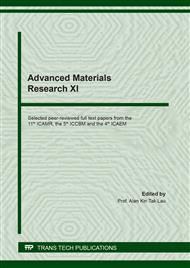p.45
p.51
p.61
p.67
p.73
p.85
p.95
p.103
p.109
A 3D Dynamic Molecular Dynamics Simulation Study: Diffusion of Two Types of Sphere Janus Colloidal Particles
Abstract:
The research of Janus colloidal particles has attracted much attention in recent years because of its huge prospects and applications in materials, chemicals, medicine, catalysis, etc. In order to reduce the cost of conducting experiments, the method of molecular dynamics simulation is used to conduct research on Janus particles. However, the current related simulation study lacks the visualization, dynamization and three-dimensionalization of the Janus particle simulation process. Therefore, the author simulates the free diffusion process of two kinds of Janus particles by using 3D visualization dynamic molecular dynamics related software in this paper. By analyzing the influence of the related parameters of particles and droplet on the diffusion process, new directions of the researches about the simulation of Janus particles can be proposed. The simulation results show that the size of the droplet, the position where the droplet is added to the solution, and the mass of the particles will affect the diffusion process rate of the particles in the droplet in the surrounding solution.
Info:
Periodical:
Pages:
73-82
Citation:
Online since:
July 2021
Authors:
Keywords:
Price:
Сopyright:
© 2021 Trans Tech Publications Ltd. All Rights Reserved
Share:
Citation:


